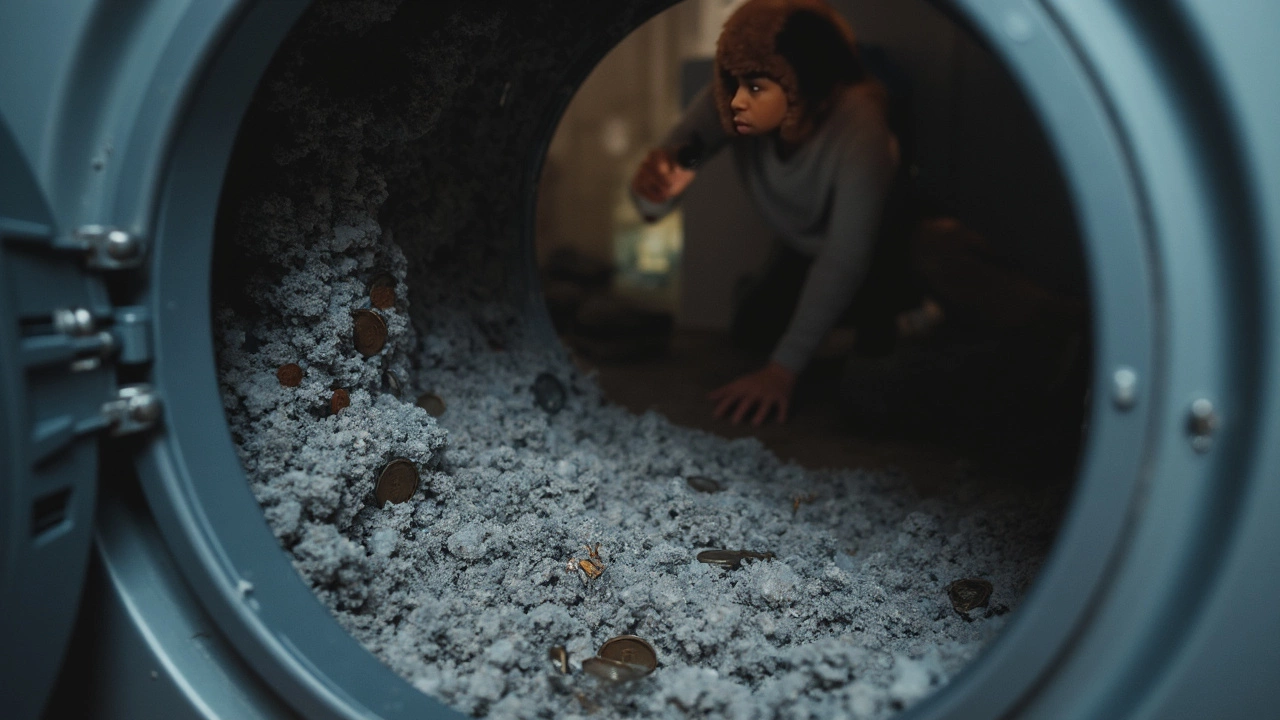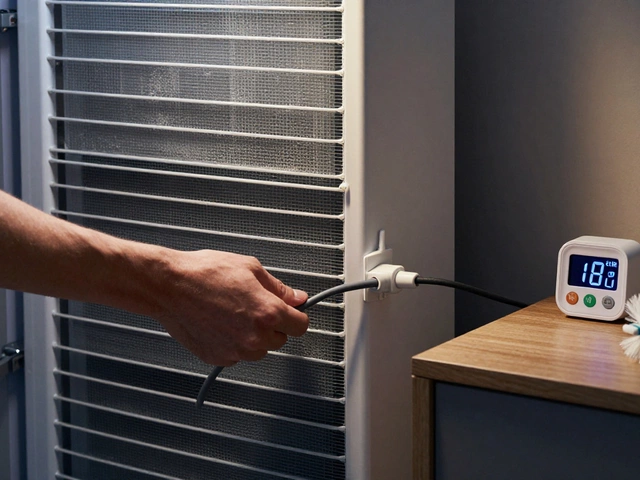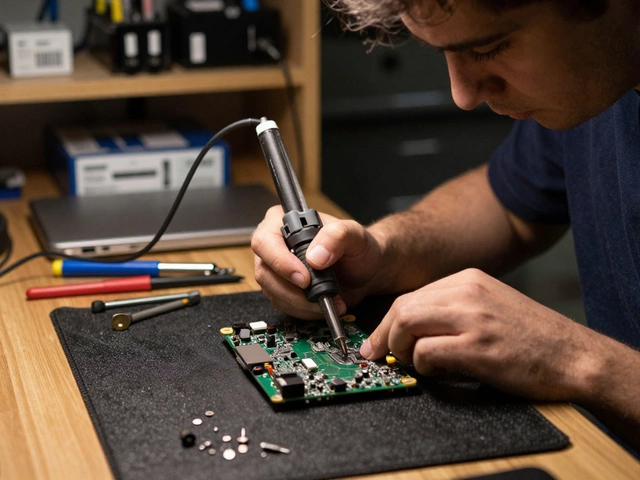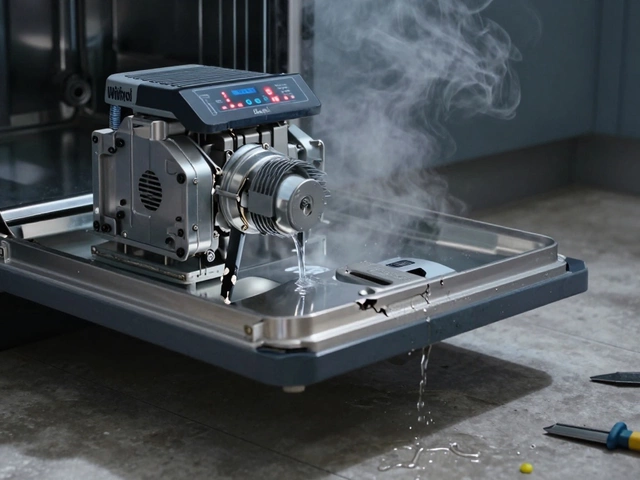If you’re like most folks, you just want your dryer to work when you need it. But dryers aren’t meant to last forever. Most home dryers stick around for about 10 to 13 years with regular use. If you’ve got kids or do laundry for a crowd, expect the lower end. Are you a single dude who does a couple loads a week? You might squeak out a few extra years.
Here’s the thing—just because your dryer still spins doesn’t mean it’s working at its best. Lint buildup, worn belts, or sad old heating elements can slowly suck away performance. People tend to ignore small issues until the dryer flat out quits, and that’s when you’ve usually got a bigger, pricier repair bill—or a shopping trip for a new machine—staring you down.
- Typical Dryer Lifespan—What to Expect
- What Shortens or Extends a Dryer’s Life?
- Warning Signs Your Dryer’s Nearing the End
- Smarter Ways to Extend Dryer Lifespan
Typical Dryer Lifespan—What to Expect
If you want to know how long your dryer will hang in there, let's talk numbers. Most dryers hold up about 10 to 13 years before they start breaking down for good. That’s the general range you’ll spot in manufacturer guides and in surveys from appliance pros. Big names like Whirlpool, LG, and Samsung all promise about a decade, and independent testers back it up—so this isn’t just sales talk.
But not everyone will see those double digits. High-traffic households (think big families or roommates) put way more loads through the machine, which wears out parts faster. Loads per week matter just as much as years on the clock. If you’re running the dryer every day, you might see problems closer to year eight or nine.
Curious how different brands and types measure up? Here’s a quick look at estimated average lifespans by dryer type:
| Dryer Type | Average Lifespan (Years) |
|---|---|
| Standard Electric | 10–13 |
| Standard Gas | 11–14 |
| High-Efficiency (HE) | 8–12 |
| Compact/Vented | 7–10 |
People often don’t realize that a gas dryer can outlast an electric one by a year or two. But don’t get too starry-eyed about these numbers. Actual dryer lifespan depends just as much on maintenance and how well you treat it. Lack of cleaning, stuffy laundry rooms, and rough use can shave years off what the brand promises.
So if you’re gunning for that 13-year mark, treat your dryer right. In the next section, I’ll break down what really shortens or extends that run.
What Shortens or Extends a Dryer’s Life?
A lot of folks don’t realize how much their day-to-day habits decide if their dryer sails past a decade or craps out early. Here’s where it gets real—every load you run, the way you take care of the machine, and even where you park it in your house will make a difference.
Let’s hit the usual suspects that shorten the life of your dryer:
- Overloading — Stuffing too many towels or jeans into the drum strains the motor and wears out belts and bearings fast. It’s like running a marathon with a backpack full of bricks every week.
- Neglecting lint filters and vents — Lint blocks airflow, making the dryer work hotter and harder. Clogged vents are actually a leading cause of dryer fires, according to the U.S. Fire Administration. Clean the lint trap every single load and run a vent brush through the ductwork every few months.
- Humidity and bad placement — Sticking your dryer in a damp garage or closet lets rust and mold attack its metal guts. Dry, ventilated spots are best for any kind of appliance.
- Ignoring noises and thumps — Weird sounds usually mean worn-out rollers or a snagged belt. Keep running it like that, and it just gets worse (and pricier to fix).
Now, there are ways you can help your machine beat the odds and keep it humming for years. Here’s what makes a difference:
- Clean the lint trap after every load. Doesn’t matter if you only dried a t-shirt—just do it. This helps with airflow and keeps things running cool.
- Once or twice a year, unplug the dryer and vacuum underneath and around it, especially the vent area. You’d be surprised what kind of dust gunk builds up back there.
- Check your exhaust vent outside. Air should blow out strong when the dryer’s on. If not, your duct might be full of lint.
- Don’t overload. Follow the manual’s load size guides or stick to 2/3 full if you’re guessing.
- Fix small repairs ASAP. If the belt’s squeaking or the drum wobbles, swap the part or call a pro early. That $20 belt changes the game compared to a $300 motor swap later.
If you want stats, take a look at the impact of just one simple thing—cleaning the lint filter:
| Lint Filter Maintenance | Average Dryer Lifespan |
|---|---|
| Every Load | 12-13 Years |
| Occasionally | 8-9 Years |
Bottom line: if you watch your habits and keep up on the small stuff, you’ll squeeze way more years out of your trusty dryer lifespan than folks who ignore warning signs and basic cleaning. It’s not rocket science, but it pays off big time.

Warning Signs Your Dryer’s Nearing the End
You can usually tell when a dryer is getting ready to throw in the towel. Most don’t just stop dead out of nowhere—there are red flags long before the final puff of hot air. Catching these early can save you time and money.
Let’s break down the dead giveaways your dryer is on its last legs:
- Dryer lifespan really takes a hit if your machine starts making odd noises. Think screeching, banging, or grinding sounds. This usually means a belt, roller, or bearing is worn out.
- Your clothes are taking two or three cycles to get dry or still feel damp at the end. When a dryer starts straining on its main job, the heating element or thermostat might be on the way out.
- A burning smell or excessive heat while running. This isn’t just annoying—it’s dangerous. Lint buildup or failing electrical parts are usually to blame, and both can mean your machine isn’t worth fixing.
- The drum isn’t spinning at all, or you hear the motor humming but nothing moves. This means a major part, like the drive motor or belt, has probably failed. Repairs here often cost more than the dryer is worth if it’s 10+ years old.
- Door won’t stay closed or latches break regularly. Constant little breakdowns add up and mean the hardware is just worn down from years of use.
Notice a pattern where you’re always calling in repairs, or the parts you’re replacing are getting expensive (think $150+ per visit)? That’s a sign your money might be better spent on a new dryer.
| Warning Sign | Likely Cause | Repair Cost |
|---|---|---|
| Loud noises | Bad bearings, roller, or belt | $100–$250 |
| Not heating up | Heating element or thermostat | $100–$300 |
| No drum movement | Drive belt or motor | $150–$400 |
| Burning smell | Electrical or lint issues | Varies |
If you’re stacking up bills or chasing the same problems over and over, don’t wait for a complete breakdown. Sometimes the smart move is to put those repair bucks toward a new machine and get back to trouble-free laundry.
Smarter Ways to Extend Dryer Lifespan
You don’t need to be a repair pro to squeeze more life out of your dryer. If you treat it right, that machine could outlast your fridge. The main trick? Stay on top of simple upkeep. Here’s what really works:
- Clean the lint trap after every load. It’s easy to forget, but this is serious. A clogged lint filter doesn’t just slow down drying—it makes the motor work harder and risks overheating. Cleaning it out can improve airflow and save energy.
- Vacuum out the vent and exhaust hose every six months. Lint sneaks past the filter and piles up in the duct, turning your dryer into a fire hazard. If your dryer takes longer than usual or feels hotter than a summer sidewalk, it’s probably time to check the vent.
- Don’t overload it. Stuffing in full loads does more than just wrinkle your shirts. It stresses the drum belt and bearings, which means earlier repairs or full-blown replacement.
- Level the dryer. A shaky dryer vibrates like crazy and wears out the motor and frame. Take five minutes to adjust the legs so it sits firm. Your ears and your dryer will thank you.
- Switch out brittle, plastic vent hoses for metal ones. Plastic hoses can catch fire. Go with rigid or semi-rigid metal ducts for better airflow and safety, plus fewer blockages.
Staying sharp on regular dryer maintenance can make a massive difference in how long your appliance lasts, and how much you spend on repairs.
| Maintenance Level | Expected Lifespan |
|---|---|
| Neglected | 7-9 years |
| Occasional Upkeep | 10-12 years |
| Regular Maintenance | 13-15 years |
Another overlooked tip? Pay attention to weird noises or damp clothes at the end of a cycle. Catch problems early—like worn belts or blocked vents—and you’ll avoid big repairs or buying a new dryer before you have to.





